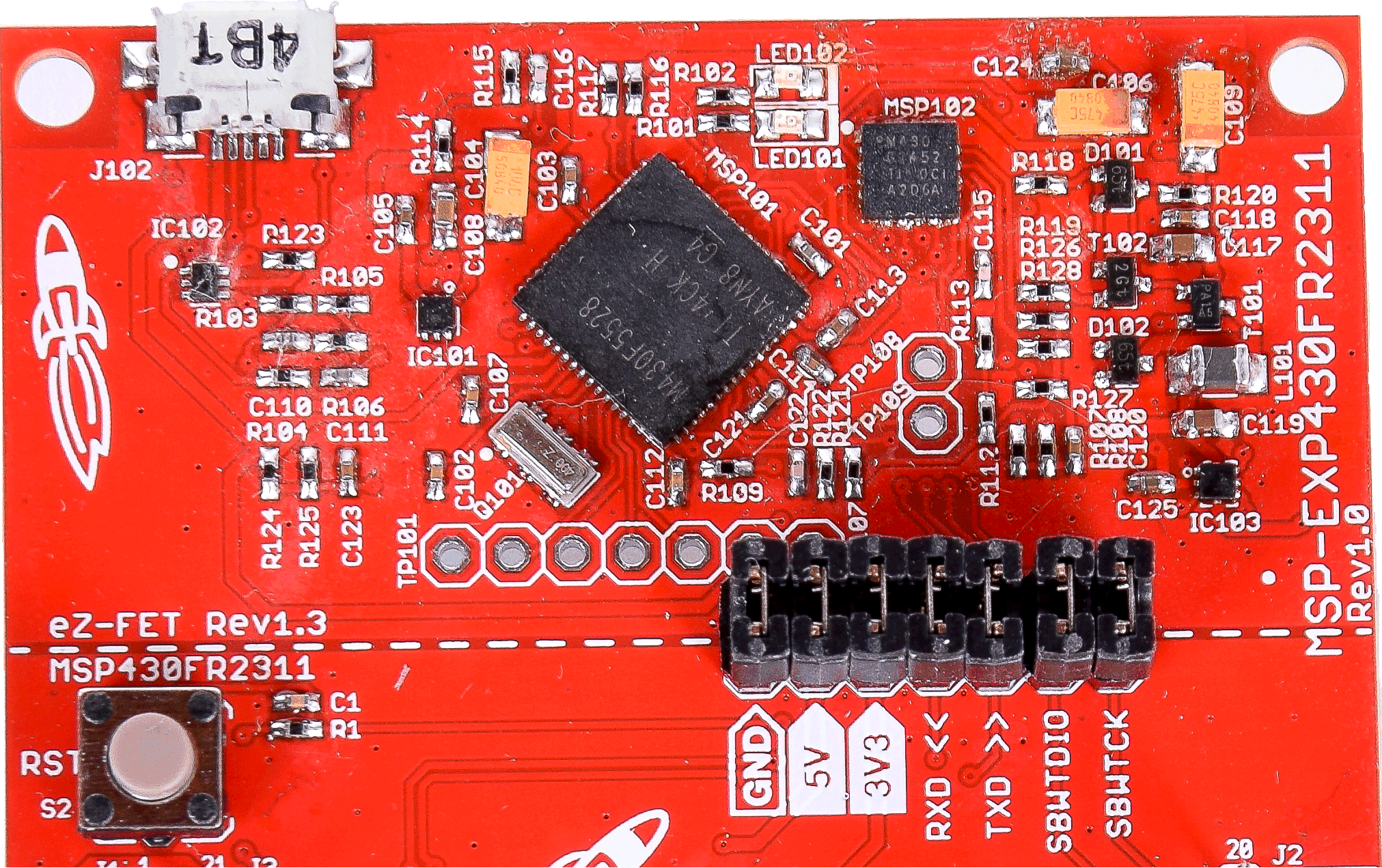SLAU664B February 2016 – August 2017
-
MSP430FR2311 LaunchPad™ Development Kit (MSP‑EXP430FR2311)
- Trademarks
- 1 Getting Started
- 2 Hardware
- 3 Software Examples
- 4 Resources
- 5 FAQ
- 6 Schematics
- Revision History
2.2.2 eZ-FET Onboard Emulator With EnergyTrace™ Software
To keep development easy and cost effective, TI's LaunchPad development kits integrate an onboard emulator, which eliminates the need for expensive programmers. The MSP-EXP430FR2311 has the eZ-FET emulator (see Figure 5), which is a simple and low-cost debugger that supports all MSP430 MCU derivatives.
 Figure 5. eZ-FET Emulator
Figure 5. eZ-FET Emulator The MSP-EXP430FR2311 MCU LaunchPad development kit features EnergyTrace software. The EnergyTrace software functionality varies across the MSP portfolio.
Table 1. EnergyTrace Software
| Features | EnergyTrace Software | EnergyTrace++ Software |
|---|---|---|
| Current monitoring | ✔ | ✔ |
| CPU State | ✔ | |
| Peripheral and system state | ✔ | |
| Devices supported | All MSP430 MCUs | MSP430FR59xx and FR69xx MCUs |
| Development tool required | MSP-FET or eZ-FET | MSP-FET or eZ-FET |
The eZ-FET also provides a "backchannel" UART-over-USB connection with the host, which can be very useful during debugging and for easy communication with a PC. The provided UART supports hardware flow control (RTS and CTS), although by default these signals are not connected to the target.
The dotted line through J101 shown in Figure 5 divides the eZ-FET emulator from the target area. The signals that cross this line can be disconnected by jumpers on J101, the isolation jumper block. More details on the isolation jumper block are in Section 2.2.3.
The eZ-FET hardware can be found in the schematics in Section 6 and in the accompanying hardware design files. The software and more information about the debugger can be found on the eZ-FET wiki.